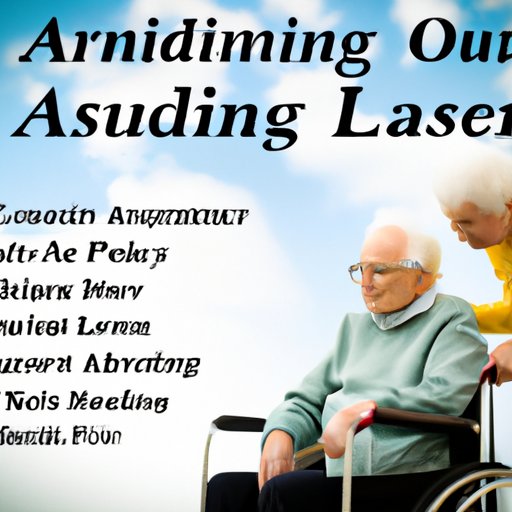Introduction
As we age, it often becomes increasingly difficult to live independently. Assisted living facilities provide a safe and secure environment for seniors who need additional help with daily tasks, while still allowing them to maintain their independence and autonomy. But what exactly is assisted living, and how does it work? In this article, we’ll explore the benefits of assisted living, understand the cost of assisted living, and learn what to expect from an assisted living facility.
What Is Assisted Living?
Assisted living is a form of housing for seniors who may need some assistance with activities of daily living (ADLs). These ADLs include bathing, dressing, and grooming, as well as taking medications and managing finances. Assisted living facilities provide 24-hour supervision and assistance with these activities, while allowing residents to maintain their independence and autonomy.
Benefits of Assisted Living
Assisted living provides many benefits that make it an attractive option for seniors. These benefits include safety and security, socialization, personal care services, and access to medical care.
Exploring the Benefits of Assisted Living
The primary benefit of assisted living is safety and security. Assisted living facilities are designed to meet the needs of seniors, providing a secure environment where they can live without fear of injury or exploitation. Additionally, most assisted living facilities have staff on hand 24 hours a day to respond to any medical emergencies.
Another benefit of assisted living is socialization. Seniors living in assisted living facilities are surrounded by people their own age, providing opportunities for friendship and companionship. Assisted living facilities typically offer a variety of activities and programs, such as group outings and classes, to keep residents engaged and entertained.
Assisted living also provides personal care services, such as assistance with bathing, dressing, and grooming. Most assisted living facilities provide these services on a regular basis, ensuring that residents receive the help they need to remain independent. Additionally, many assisted living facilities offer medication management, helping residents stay on track with their medication schedules.

Understanding the Cost of Assisted Living
The cost of assisted living varies depending on the type of facility and the level of care needed. Generally speaking, assisted living facilities are more expensive than other types of senior housing, such as independent living communities. However, there are several different payment plans available to help cover the cost of assisted living.
Types of Payment Plans
One popular payment plan is private pay. This type of payment plan allows seniors to pay for their assisted living expenses out of pocket. Private pay plans typically require a one-time entrance fee, followed by monthly payments for services.
Another type of payment plan is long-term care insurance. Long-term care insurance is a type of insurance policy that covers the costs associated with assisted living, including room and board, personal care services, and medical care. However, not all insurance policies cover assisted living, so it’s important to read the fine print before signing up for a policy.
Finally, some states offer Medicaid waivers that can be used to cover the cost of assisted living. Medicaid waivers allow states to cover the cost of care for individuals who meet certain criteria, such as having a low income or requiring a high level of care. To find out if your state offers Medicaid waivers, contact your local Medicaid office.
Calculating Total Costs
When calculating the total cost of assisted living, it’s important to factor in all of the costs associated with living in an assisted living facility. This includes the entrance fee, monthly fees for services, and any additional fees for special services or amenities. It’s also important to consider the cost of transportation, as many assisted living facilities do not provide transportation services.
What to Expect from an Assisted Living Facility
Assisted living facilities offer a variety of accommodations, activities, and meals. Accommodations typically include private apartments or rooms, each with its own bathroom and kitchenette. Activities offered at assisted living facilities range from educational classes to recreational activities, such as exercise classes and arts and crafts. Meals are usually served in a communal dining area, and many facilities offer snacks throughout the day.

The Role of Medical Professionals in Assisted Living
Assisted living facilities typically employ a variety of medical professionals to provide healthcare services and medication management. Healthcare services provided in assisted living facilities may include physical therapy, occupational therapy, and speech therapy. Medication management services help ensure that residents are taking their medications as prescribed and are following their doctor’s orders.

Life in an Assisted Living Community
Living in an assisted living community provides seniors with many opportunities for social interaction. Residents can participate in a variety of activities, such as group outings and classes, to stay connected and engaged. Additionally, many assisted living facilities host special events, such as birthday parties and holiday celebrations, to bring residents together and foster a sense of community.
Conclusion
Assisted living is a great option for seniors who need assistance with activities of daily living, but still want to maintain their independence. Assisted living provides a safe and secure environment, along with personal care services, access to medical care, and opportunities for social interaction. The cost of assisted living varies, but there are payment plans available to help cover the cost. When considering an assisted living facility, it’s important to consider the types of accommodations, activities, and meals offered, as well as the role of medical professionals in providing healthcare services and medication management.
Overall, assisted living provides a number of benefits that make it an attractive option for seniors. With the right assisted living facility, seniors can enjoy a high quality of life while still maintaining their independence and autonomy.
(Note: Is this article not meeting your expectations? Do you have knowledge or insights to share? Unlock new opportunities and expand your reach by joining our authors team. Click Registration to join us and share your expertise with our readers.)
